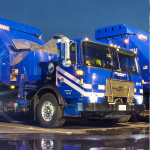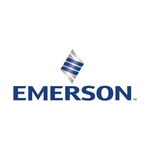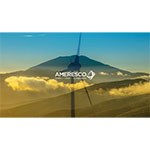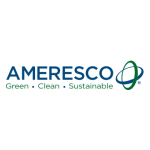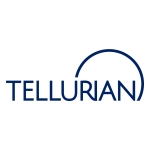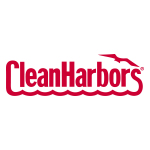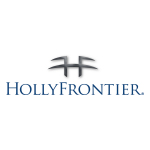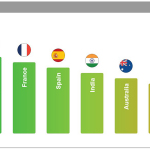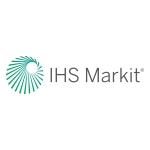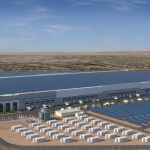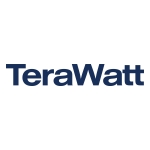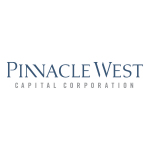Market trends improved throughout the first quarter
BROOKLYN HEIGHTS, Ohio--(BUSINESS WIRE)--GrafTech International Ltd. (NYSE: EAF) (GrafTech or the Company) today announced financial results for the quarter ended March 31, 2021.

First Quarter 2021 Highlights
-
Reported net income of $99 million, or $0.37 per share, and net income margin of 32%
-
Adjusted EBITDA1 of $155 million, for a 51% margin2
-
Generated cash flow from operating activities of $122 million
-
Reduced debt by $150 million and lowered interest rate on our Term Loan by 100 basis points
-
Sales volume of 37 thousand metric tons (MT) increased 9% compared to the first quarter of 2020
-
Production volume of 36 thousand MT increased 9% compared to the first quarter of 2020
CEO Comments
President and Chief Executive Officer David Rintoul commented, “We are pleased with our first quarter results as we achieved improvement in key production and sales volume metrics, while further strengthening our balance sheet by reducing our long term debt and lowering our interest rate. Once again, our team remained focused on executing our strategy, delivering results, and positioning the company as market conditions improve.
“We are encouraged by developments in the current market for graphite electrodes as we are seeing increased demand for our products, which is beginning to have a positive influence on spot prices. We expect to see improvement in our reported non-LTA pricing in the second half of 2021. We believe GrafTech is well positioned for success given the long term growth opportunity associated with the benefits of electric arc furnace steel production.”
First Quarter 2021 Financial Performance
|
|
|
|
| (dollars in thousands, except per share amounts) |
|
|
Q1 2021
|
Q4 2020
|
Q1 2020
|
Net sales
|
|
|
$
|
304,397
|
|
$
|
338,010
|
|
$
|
318,646
|
|
Net income
|
|
|
$
|
98,799
|
|
$
|
125,096
|
|
$
|
122,268
|
|
Earnings per share3
|
|
|
$
|
0.37
|
|
$
|
0.47
|
|
$
|
0.45
|
|
Adjusted EBITDA1
|
|
|
$
|
155,045
|
|
$
|
175,538
|
|
$
|
179,178
|
|
Cash flow from operations
|
|
|
$
|
122,425
|
|
$
|
146,981
|
|
$
|
139,283
|
|
Free cash flow4
|
|
|
$
|
108,251
|
|
$
|
141,594
|
|
$
|
125,382
|
|
-
51% adjusted EBITDA2 margin in the first quarter
-
70% of adjusted EBITDA converted to free cash flow5 in the first quarter
Operational and Commercial Update
GrafTech continues to focus on strong execution. Our plants achieved a 95% on-time delivery rate in the first quarter, and we are currently increasing production with the improving demand for graphite electrodes.
Key operating metrics
|
|
|
|
|
|
|
|
|
|
|
|
|
|
(in thousands, except percentages)
|
|
|
Q1 2021
|
|
|
Q4 2020
|
|
|
Q1 2020
|
Sales volume (MT)6
|
|
|
37
|
|
|
|
37
|
|
|
|
34
|
|
Production volume (MT)7
|
|
|
36
|
|
|
|
36
|
|
|
|
33
|
|
Production capacity excluding St. Marys (MT)8, 9
|
|
|
51
|
|
|
|
52
|
|
|
|
51
|
|
Capacity utilization excluding St. Marys8, 10
|
|
|
71
|
%
|
|
|
69
|
%
|
|
|
65
|
%
|
Total production capacity (MT)9, 11
|
|
|
58
|
|
|
|
59
|
|
|
|
58
|
|
Total capacity utilization10, 11
|
|
|
62
|
%
|
|
|
61
|
%
|
|
|
57
|
%
|
GrafTech reported solid results in the first quarter of 2021, with sales volumes of 37 thousand MT, consisting of long term agreement (LTA) volumes of 26 thousand MT at an average approximate price of $9,500 per MT and non-LTA volumes of 11 thousand MT at an average approximate price of $4,200 per MT.
The estimated shipments of graphite electrodes for the final two years of the initial term under our LTAs and for the years 2023 through 2024 remain unchanged from our prior estimate as follows:
|
|
|
2021
|
|
2022
|
|
2023 through 2024
|
Estimated LTA volume (in thousands of MT)
|
|
|
98-108
|
|
95-105
|
|
35-45
|
Estimated LTA revenue (in millions)
|
|
|
$925-$1,025
|
|
$910-$1,010
|
|
$350-$45012
|
Global steel market capacity utilization rates have continued to improve sequentially:
|
|
|
Q1 2021
|
|
Q4 2020
|
|
Q1 2020
|
Global (ex-China) capacity utilization rate13
|
|
|
73%
|
|
72%
|
|
71%
|
U.S. steel market capacity utilization rate14
|
|
|
77%
|
|
72%
|
|
79%
|
With the improved market demand, we expect sales volumes to increase through the balance of the year.
Capital Structure and Capital Allocation
As of March 31, 2021, GrafTech had cash and cash equivalents of $96 million and total debt of approximately $1.3 billion.
Our 2021 capital expenditure range expectations are unchanged, between $55 and $65 million, and we continue to expect our primary use of cash to be debt repayment.
Conference Call Information
In conjunction with this earnings release, you are invited to listen to our earnings call being held on May 5, 2021 at 10:00 a.m. Eastern Time. The webcast and accompanying slide presentation will be available at www.GrafTech.com, in the Investors section. The earnings call dial-in number is +1 (866) 521-4909 toll-free in the U.S. and Canada or +1 (647) 427-2311 for overseas calls, conference ID: 3248097. A replay of the Conference Call will be available until August 5, 2021 by dialing +1 (800) 585-8367 toll-free in the U.S. and Canada or +1 (416) 621-4642 for overseas calls, conference ID: 3248097. A replay of the webcast will also be available on our website until August 5, 2021, at www.GrafTech.com, in the Investors section. GrafTech also makes its complete financial reports that have been filed with the Securities and Exchange Commission (SEC) and other information available at www.GrafTech.com. The information in our website is not part of this release or any report we file or furnish to the SEC.
About GrafTech
GrafTech International Ltd. is a leading manufacturer of high-quality graphite electrode products essential to the production of electric arc furnace steel and other ferrous and non-ferrous metals. The Company has a competitive portfolio of low cost graphite electrode manufacturing facilities, including three of the highest capacity facilities in the world. We are the only large-scale graphite electrode producer that is substantially vertically integrated into petroleum needle coke, our primary raw material for graphite electrode manufacturing. This unique position provides competitive advantages in product quality and cost.
________________________
|
1 A non-GAAP financial measure, see below for more information and a reconciliation of EBITDA and adjusted EBITDA to net income, the most directly comparable financial measure calculated and presented in accordance with GAAP.
|
2 Adjusted EBITDA margin is calculated as adjusted EBITDA divided by net sales (Q1 2021 adjusted EBITDA of $155 million/Q1 2021 net sales of $304 million).
|
3 Earnings per share represents diluted earnings per share.
|
4 A non-GAAP financial measure, see below for more information and a reconciliation of free cash flow to cash flow from operating activities, the most directly comparable financial measure calculated and presented in accordance with GAAP.
|
5 Free cash flow conversion is calculated as free cash flow divided by adjusted EBITDA (Q1 2021 free cash flow of $108 million/Q1 2021 adjusted EBITDA of $155 million).
|
6 Sales volume reflects only graphite electrodes manufactured by GrafTech.
|
7 Production volume reflects graphite electrodes we produced during the period.
|
8 In the first quarter of 2018, our St. Marys facility began graphitizing a limited number of electrodes sourced from our Monterrey, Mexico facility.
|
9 Production capacity reflects expected maximum production volume during the period under normal operating conditions, standard product mix and expected maintenance outage. Actual production may vary.
|
10 Capacity utilization reflects production volume as a percentage of production capacity.
|
11 Includes graphite electrode facilities in Calais, France; Monterrey, Mexico; Pamplona, Spain; and St. Marys, Pennsylvania.
|
12 Includes expected termination fees from a few customers that have failed to meet certain obligations under their long term agreements.
|
13 Source: World Steel Association and Metal Expert.
|
14 Source: American Iron and Steel Institute.
|
Special note regarding forward-looking statements
This news release and related discussions may contain forward-looking statements that reflect our current views with respect to, among other things, future events and financial performance. You can identify these forward-looking statements by the use of forward-looking words such as “will,” “may,” “plan,” “estimate,” “project,” “believe,” “anticipate,” “expect,” “foresee,” “intend,” “should,” “would,” “could,” “target,” “goal,” “continue to,” “positioned to,” “are confident”, or the negative versions of those words or other comparable words. Any forward-looking statements contained in this release are based upon our historical performance and on our current plans, estimates and expectations considering information currently available to us. The inclusion of this forward-looking information should not be regarded as a representation by us that the future plans, estimates, or expectations contemplated by us will be achieved. Our expectations and targets are not predictions of actual performance and historically our performance has deviated, often significantly, from our expectations and targets. These forward-looking statements are subject to various risks and uncertainties and assumptions relating to our operations, financial results, financial condition, business, prospects, growth strategy and liquidity. Accordingly, there are or will be important factors that could cause our actual results to differ materially from those indicated in these statements. We believe that these factors include, but are not limited to: the ultimate impact that the COVID-19 pandemic has on our business, results of operations, financial condition and cash flows; the cyclical nature of our business and the selling prices of our products may lead to periods of reduced profitability and net losses in the future; the possibility that we may be unable to implement our business strategies, including our ability to secure and maintain longer-term customer contracts, in an effective manner; the risks and uncertainties associated with litigation, arbitration, and like disputes, including the current stockholder litigation and disputes related to contractual commitments; the possibility that global graphite electrode overcapacity may adversely affect graphite electrode prices; pricing for graphite electrodes has historically been cyclical and the price of graphite electrodes may continue to decline in the future; the sensitivity of our business and operating results to economic conditions and the possibility others may not be able to fulfill their obligations to us in a timely fashion or at all; our dependence on the global steel industry generally and the electric arc furnace steel industry in particular; the competitiveness of the graphite electrode industry; our dependence on the supply of petroleum needle coke; our dependence on supplies of raw materials (in addition to petroleum needle coke) and energy; the possibility that our manufacturing operations are subject to hazards; changes in, or more stringent enforcement of, health, safety and environmental regulations applicable to our manufacturing operations and facilities; the legal, compliance, economic, social and political risks associated with our substantial operations in multiple countries; the possibility that fluctuation of foreign currency exchange rates could materially harm our financial results; the possibility that our results of operations could deteriorate if our manufacturing operations were substantially disrupted for an extended period, including as a result of equipment failure, climate change, regulatory issues, natural disasters, public health crises, such as the COVID-19 pandemic, political crises or other catastrophic events; our dependence on third parties for certain construction, maintenance, engineering, transportation, warehousing and logistics services; the possibility that we are unable to recruit or retain key management and plant operating personnel or successfully negotiate with the representatives of our employees, including labor unions; the possibility that we may divest or acquire businesses, which could require significant management attention or disrupt our business; the sensitivity of goodwill on our balance sheet to changes in the market; the possibility that we are subject to information technology systems failures, cybersecurity attacks, network disruptions and breaches of data security; our dependence on protecting our intellectual property; the possibility that third parties may claim that our products or processes infringe their intellectual property rights; the possibility that significant changes in our jurisdictional earnings mix or in the tax laws of those jurisdictions could adversely affect our business; the possibility that our indebtedness could limit our financial and operating activities or that our cash flows may not be sufficient to service our indebtedness; the possibility that restrictive covenants in our financing agreements could restrict or limit our operations; the fact that borrowings under certain of our existing financing agreements subject us to interest rate risk; the possibility of a lowering or withdrawal of the ratings assigned to our debt; the possibility that disruptions in the capital and credit markets could adversely affect our results of operations, cash flows and financial condition, or those of our customers and suppliers; the possibility that highly concentrated ownership of our common stock may prevent minority stockholders from influencing significant corporate decisions; the possibility that we may not pay cash dividends on our common stock in the future; the fact that certain of our stockholders have the right to engage or invest in the same or similar businesses as us; the possibility that the market price of our common stock could be negatively affected by sales of substantial amounts of our common stock in the public markets, including by Brookfield Asset Management Inc. and its affiliates; the fact that certain provisions of our Amended and Restated Certificate of Incorporation and our Amended and Restated By-Laws could hinder, delay or prevent a change of control; the fact that the Court of Chancery of the State of Delaware will be the exclusive forum for substantially all disputes between us and our stockholders; and the loss of our status as a “controlled company” within the meaning of the New York Stock Exchange corporate governance standards, which will result in us no longer qualifying for exemptions from certain corporate governance requirements.
These factors should not be construed as exhaustive and should be read in conjunction with the other cautionary statements, including the Risk Factors sections included in our most recent Annual Report on Form 10-K and other filings with the SEC. The forward-looking statements made in this press release relate only to events as of the date on which the statements are made. We do not undertake any obligation to publicly update or review any forward-looking statement, except as required by law, whether as a result of new information, future developments or otherwise.
Non-GAAP financial measures
In addition to providing results that are determined in accordance with GAAP, we have provided certain financial measures that are not in accordance with GAAP. EBITDA, adjusted EBITDA, adjusted EBITDA margin, free cash flow and free cash flow conversion are non-GAAP financial measures.
We define EBITDA, a non-GAAP financial measure, as net income or loss plus interest expense, minus interest income, plus income taxes and depreciation and amortization. We define adjusted EBITDA as EBITDA plus any pension and other post-employment benefit ("OPEB") plan expenses, initial and follow-on public offering and related expenses, non-cash gains or losses from foreign currency remeasurement of non-operating liabilities in our foreign subsidiaries where the functional currency is the U.S. dollar, related party Tax Receivable Agreement expense, stock-based compensation and non-cash fixed asset write-offs. Adjusted EBITDA is the primary metric used by our management and our board of directors to establish budgets and operational goals for managing our business and evaluating our performance.
We monitor adjusted EBITDA as a supplement to our GAAP measures, and believe it is useful to present to investors, because we believe that it facilitates evaluation of our period-to-period operating performance by eliminating items that are not operational in nature, allowing comparison of our recurring core business operating results over multiple periods unaffected by differences in capital structure, capital investment cycles and fixed asset base. Adjusted EBITDA margin is also a non-GAAP financial measure used by our management and our board of directors as supplemental information to assess the Company’s operational performance and is calculated as adjusted EBITDA divided by net sales. In addition, we believe adjusted EBITDA, adjusted EBITDA margin and similar measures are widely used by investors, securities analysts, ratings agencies, and other parties in evaluating companies in our industry as a measure of financial performance and debt-service capabilities. We also monitor the ratio of total debt to trailing twelve month adjusted EBITDA, because we believe it is a useful and widely used way to assess our leverage.
Our use of adjusted EBITDA has limitations as an analytical tool, and you should not consider it in isolation or as a substitute for analysis of our results as reported under GAAP. Some of these limitations are:
-
adjusted EBITDA does not reflect changes in, or cash requirements for, our working capital needs;
-
adjusted EBITDA does not reflect our cash expenditures for capital equipment or other contractual commitments, including any capital expenditure requirements to augment or replace our capital assets;
-
adjusted EBITDA does not reflect the interest expense or the cash requirements necessary to service interest or principal payments on our indebtedness;
-
adjusted EBITDA does not reflect tax payments that may represent a reduction in cash available to us;
-
adjusted EBITDA does not reflect expenses relating to our pension and OPEB plans;
-
adjusted EBITDA does not reflect the non-cash gains or losses from foreign currency remeasurement of non-operating liabilities in our foreign subsidiaries where the functional currency is the U.S. dollar;
-
adjusted EBITDA does not reflect initial and follow-on public offering and related expenses;
-
adjusted EBITDA does not reflect related party Tax Receivable Agreement expense;
-
adjusted EBITDA does not reflect stock-based compensation or the non-cash write-off of fixed assets; and
-
other companies, including companies in our industry, may calculate EBITDA, adjusted EBITDA and adjusted EBITDA margin differently, which reduces its usefulness as a comparative measure.
Free cash flow, a non-GAAP financial measure, is a metric used by our management and our board of directors to analyze cash flows generated from operations. We define free cash flow as net cash provided by operating activities less capital expenditures. We believe free cash flow is useful to present to investors because we believe that it facilitates comparison of the Company’s performance with its competitors. Free cash flow conversion is also a non-GAAP financial measure used by our management and our board of directors as supplemental information to evaluate the Company’s ability to convert earnings from our operational performance to cash. We calculate free cash flow conversion as free cash flow divided by adjusted EBITDA.
In evaluating EBITDA, adjusted EBITDA, adjusted EBITDA margin, free cash flow and free cash flow conversion, you should be aware that in the future, we will incur expenses similar to the adjustments in the reconciliation presented below. Our presentations of EBITDA, adjusted EBITDA, adjusted EBITDA margin, free cash flow and free cash flow conversion should not be construed as suggesting that our future results will be unaffected by these expenses or any unusual or non-recurring items. When evaluating our performance, you should consider EBITDA, adjusted EBITDA, adjusted EBITDA margin, free cash flow and free cash flow conversion alongside other financial performance measures, including our net income (loss) and cash flow from operating activities, respectively, and other GAAP measures.
| |
GRAFTECH INTERNATIONAL LTD. AND SUBSIDIARIES
|
CONDENSED CONSOLIDATED BALANCE SHEETS
|
(Dollars in thousands)
|
Unaudited
|
|
|
|
|
|
|
|
As of
March 31,
2021
|
|
As of
December 31,
2020
|
ASSETS
|
|
|
|
|
Current assets:
|
|
|
|
|
Cash and cash equivalents
|
|
$
|
96,446
|
|
|
$
|
145,442
|
|
Accounts and notes receivable, net of allowance for doubtful accounts of
$9,065 as of March 31, 2021 and $8,243 as of December 31, 2020
|
|
195,930
|
|
|
182,647
|
|
Inventories
|
|
250,810
|
|
|
265,964
|
|
Prepaid expenses and other current assets
|
|
40,544
|
|
|
35,114
|
|
Total current assets
|
|
583,730
|
|
|
629,167
|
|
Property, plant and equipment
|
|
786,124
|
|
|
784,902
|
|
Less: accumulated depreciation
|
|
287,666
|
|
|
278,685
|
|
Net property, plant and equipment
|
|
498,458
|
|
|
506,217
|
|
Deferred income taxes
|
|
32,446
|
|
|
32,551
|
|
Goodwill
|
|
171,117
|
|
|
171,117
|
|
Other assets
|
|
92,370
|
|
|
93,660
|
|
Total assets
|
|
$
|
1,378,121
|
|
|
$
|
1,432,712
|
|
LIABILITIES AND STOCKHOLDERS’ EQUITY
|
|
|
|
|
Current liabilities:
|
|
|
|
|
Accounts payable
|
|
$
|
82,594
|
|
|
$
|
70,989
|
|
Short-term debt
|
|
127
|
|
|
131
|
|
Accrued income and other taxes
|
|
33,198
|
|
|
48,720
|
|
Other accrued liabilities
|
|
83,679
|
|
|
56,501
|
|
Related party payable - tax receivable agreement
|
|
3,922
|
|
|
21,752
|
|
Total current liabilities
|
|
203,520
|
|
|
198,093
|
|
|
|
|
|
|
Long-term debt
|
|
1,272,996
|
|
|
1,420,000
|
|
Other long-term obligations
|
|
77,284
|
|
|
81,478
|
|
Deferred income taxes
|
|
42,986
|
|
|
43,428
|
|
Related party payable - tax receivable agreement long-term
|
|
15,176
|
|
|
19,098
|
|
Stockholders’ equity:
|
|
|
|
|
Preferred stock, par value $0.01, 300,000,000 shares authorized, none issued
|
|
—
|
|
|
—
|
|
Common stock, par value $0.01, 3,000,000,000 shares authorized, 267,257,592
shares issued and outstanding as of March 31, 2021 and 267,188,547
as of December 31, 2020
|
|
2,673
|
|
|
2,672
|
|
Additional paid-in capital
|
|
759,055
|
|
|
758,354
|
|
Accumulated other comprehensive loss
|
|
(20,717
|
)
|
|
(19,641
|
)
|
Accumulated deficit
|
|
(974,852
|
)
|
|
(1,070,770
|
)
|
Total stockholders’ deficit
|
|
(233,841
|
)
|
|
(329,385
|
)
|
|
|
|
|
|
Total liabilities and stockholders’ equity
|
|
$
|
1,378,121
|
|
|
$
|
1,432,712
|
|
|
|
|
|
|
|
|
GRAFTECH INTERNATIONAL LTD. AND SUBSIDIARIES
|
CONDENSED CONSOLIDATED STATEMENTS OF OPERATIONS
|
(Dollars in thousands, except per share data)
|
Unaudited
|
|
|
|
|
|
For the Three Months
Ended March 31,
|
|
|
2021
|
|
2020
|
CONSOLIDATED STATEMENTS OF OPERATIONS
|
|
|
|
|
Net sales
|
|
$
|
304,397
|
|
|
$
|
318,646
|
|
Cost of sales
|
|
146,396
|
|
|
138,917
|
|
Gross profit
|
|
158,001
|
|
|
179,729
|
|
Research and development
|
|
969
|
|
|
712
|
|
Selling and administrative expenses
|
|
20,153
|
|
|
14,932
|
|
Operating profit
|
|
136,879
|
|
|
164,085
|
|
|
|
|
|
|
Other expense
|
|
(354
|
)
|
|
(3,314
|
)
|
Related party Tax Receivable Agreement expense (benefit)
|
|
47
|
|
|
(3,346
|
)
|
Interest expense
|
|
22,167
|
|
|
25,672
|
|
Interest income
|
|
(37
|
)
|
|
(1,141
|
)
|
Income before provision for income taxes
|
|
115,056
|
|
|
146,214
|
|
Provision for income taxes
|
|
16,257
|
|
|
23,946
|
|
Net income
|
|
$
|
98,799
|
|
|
$
|
122,268
|
|
|
|
|
|
|
Basic income per common share:
|
|
|
|
|
Net income per share
|
|
$
|
0.37
|
|
|
$
|
0.45
|
|
Weighted average common shares outstanding
|
|
267,318,860
|
|
|
269,216,820
|
|
Diluted income per common share:
|
|
|
|
|
Income per share
|
|
$
|
0.37
|
|
|
$
|
0.45
|
|
Weighted average common shares outstanding
|
|
267,465,319
|
|
|
269,236,562
|
|
|
|
|
|
|
GRAFTECH INTERNATIONAL LTD. AND SUBSIDIARIES
|
CONDENSED CONSOLIDATED STATEMENTS OF CASH FLOWS
|
(Dollars in thousands)
|
Unaudited
|
|
|
|
|
|
For the Three Months
Ended March 31,
|
|
|
2021
|
|
2020
|
Cash flow from operating activities:
|
|
|
|
|
Net income
|
|
$
|
98,799
|
|
|
$
|
122,268
|
|
Adjustments to reconcile net income to cash
provided by operations:
|
|
|
|
|
Depreciation and amortization
|
|
16,539
|
|
|
14,284
|
|
Related party Tax Receivable Agreement expense (benefit)
|
|
47
|
|
|
(3,346
|
)
|
Deferred income tax provision
|
|
(2,840
|
)
|
|
6,348
|
|
Interest expense
|
|
5,309
|
|
|
1,594
|
|
Other charges, net
|
|
2,349
|
|
|
(838
|
)
|
Net change in working capital*
|
|
25,187
|
|
|
27,727
|
|
Change in related-party Tax Receivable Agreement
|
|
(21,799
|
)
|
|
(27,857
|
)
|
Change in long-term assets and liabilities
|
|
(1,166
|
)
|
|
(897
|
)
|
Net cash provided by operating activities
|
|
122,425
|
|
|
139,283
|
|
Cash flow from investing activities:
|
|
|
|
|
Capital expenditures
|
|
(14,174
|
)
|
|
(13,901
|
)
|
Proceeds from the sale of assets
|
|
151
|
|
|
62
|
|
Net cash used in investing activities
|
|
(14,023
|
)
|
|
(13,839
|
)
|
Cash flow from financing activities:
|
|
|
|
|
Debt issuance and modification costs
|
|
(2,971
|
)
|
|
—
|
|
Repurchase of common stock - non-related party
|
|
—
|
|
|
(30,099
|
)
|
Principal repayments on long-term debt
|
|
(150,000
|
)
|
|
—
|
|
Dividends paid to non-related party
|
|
(1,394
|
)
|
|
(5,926
|
)
|
Dividends paid to related party
|
|
(1,277
|
)
|
|
(16,933
|
)
|
Other
|
|
(1,120
|
)
|
|
(46
|
)
|
Net cash used in financing activities
|
|
(156,762
|
)
|
|
(53,004
|
)
|
Net change in cash and cash equivalents
|
|
(48,360
|
)
|
|
72,440
|
|
Effect of exchange rate changes on cash and cash equivalents
|
|
(636
|
)
|
|
(1,266
|
)
|
Cash and cash equivalents at beginning of period
|
|
145,442
|
|
|
80,935
|
|
Cash and cash equivalents at end of period
|
|
$
|
96,446
|
|
|
$
|
152,109
|
|
|
|
|
|
|
* Net change in working capital due to changes in the following components:
|
|
|
Accounts and notes receivable, net
|
|
$
|
(16,643
|
)
|
|
$
|
40,743
|
|
Inventories
|
|
11,648
|
|
|
(17,236
|
)
|
Prepaid expenses and other current assets
|
|
(1,510
|
)
|
|
7,411
|
|
Income taxes payable
|
|
(18,368
|
)
|
|
14,238
|
|
Accounts payable and accruals
|
|
44,333
|
|
|
(17,388
|
)
|
Interest payable
|
|
5,727
|
|
|
(41
|
)
|
Net change in working capital
|
|
$
|
25,187
|
|
|
$
|
27,727
|
|
Contacts
Wendy Watson
216-676-2699
Read full story here 

